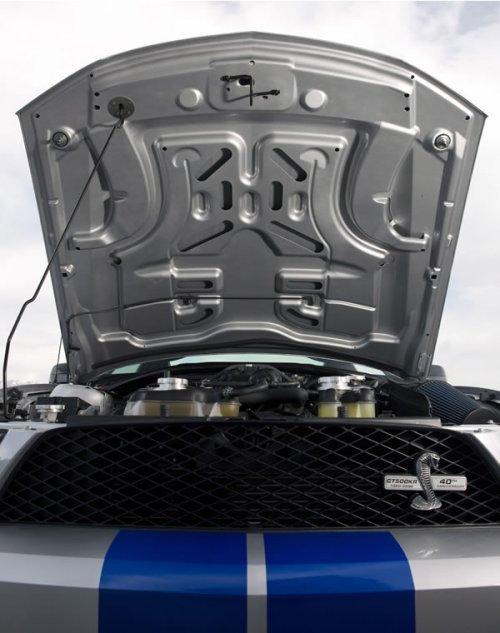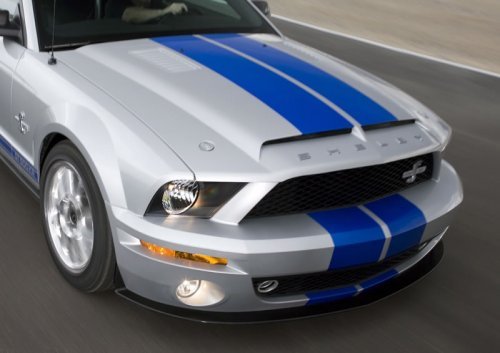2008 Shelby GT500KR Motorhaube aus Carbon Fiberglas
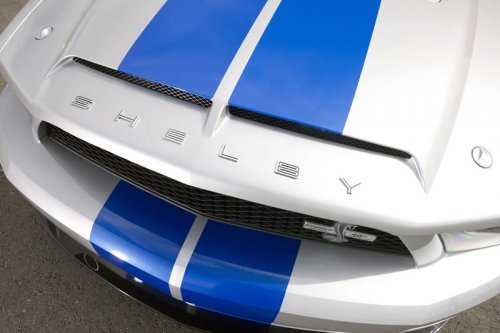
Die Motorhaube des neuen Shelby GT500KR besteht zu 100% aus Carbon Fiberglas, dies hat der Chef Entwickler von Ford SVT, Jamal Hameedi nun bekannt gegeben. Dies ist das erste Bauteil was Ford und Shelby aus Fiberglas, bisher bei Ihren Modellen einsetzt. “This is our first-ever production application of carbon fiber, and it is fitting that we developed it with Shelby Automobiles, … It’s there purely for performance. It brings important aerodynamic and weight-reduction benefits that translate into enhanced performance for our new King of the Road.â€
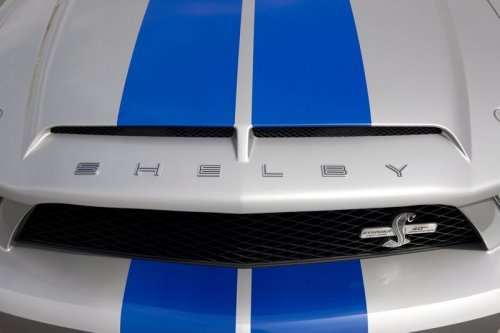
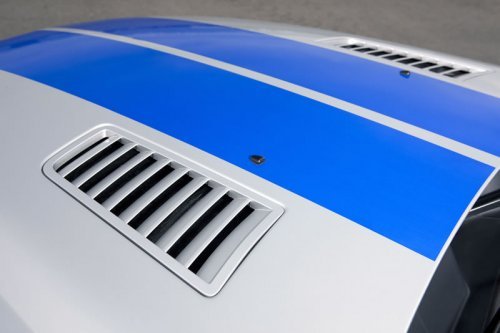
Art and Science of Performance
Delivering more power and performance in the new KR meant a more sophisticated approach to managing underhood aero pressure, especially at high speeds. The new carbon fiber hood incorporates aggressive vents in its leading edge and large rear surface ducts on each side – cues that make the performance pedigree of this latest Ford-Shelby collaboration immediately clear.
But it’s the underside of the hood where the really magic happens.
Carbon fiber, cured at high temperature in an autoclave, allowed Ford SVT and Shelby engineers to create a complex aerodynamic pressure management system.
This architecture creates two pressure zones under the hood – a high-pressure zone for fresh air intake for combustion and a low-pressure zone that expels hot engine compartment air.
Intake air for the supercharger is fed via the leading-edge intake vents. Then the underhood ducting routes it directly into a high-pressure subcompartment at the left-front corner of the engine compartment. Inside the subcompartment, separated from the rest of the underhood area by a robust rubber sealing system, is a large, conical, performance intake filter for the cool, fresh intake air.
The aerodynamic properties of the new hood were perfected in the wind tunnel after extensive computer modeling using computational fluid dynamics.
The hood is locked in place – and its complex aero performance is ensured – by artful stainless steel hood pins that lock the front corners into place. Even the hood pin shape is aerodynamically honed for reduced drag.
The rest of the underhood is a low-pressure zone, thanks to the large anterior ducts that effectively suck hot air out of the engine compartment at speed. This optimizes the effectiveness of the engine cooling systems, which are critical to performance.
Having large louvered ducts on the top of the hood requires careful engineering to protect the engine and underhood components – especially electronics – from water.
Water is indirectly routed downward through underhood ducting to drains that have been carefully placed. Hot engine compartment air is pushed up through 10 smaller underhood vents and out through the larger exterior vents. The unique water management system and the use of carbon fiber for the hood eliminate the likelihood of corrosion – a typical issue for collectors.
“This hood architecture helps the new KR deliver its 40-horsepower increase without sacrificing refinement and practicality for street use,†Hameedi said.
[Source:mustangblog]
Leave a comment

